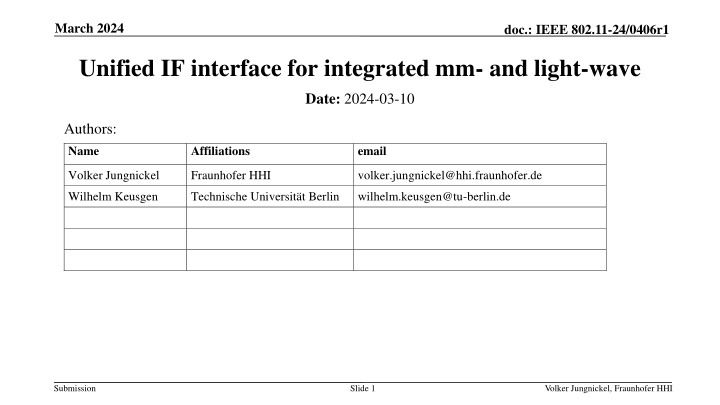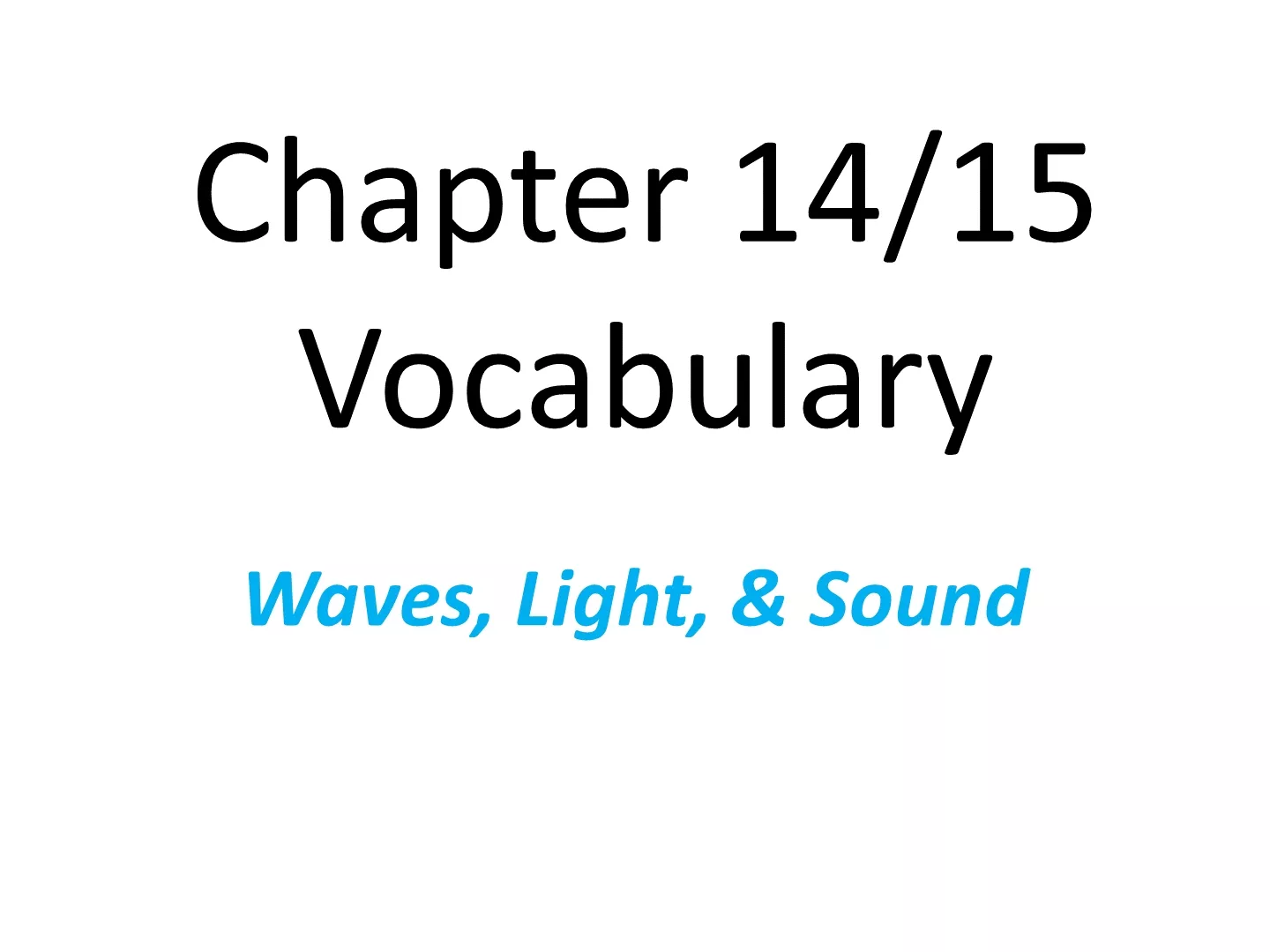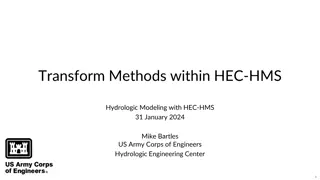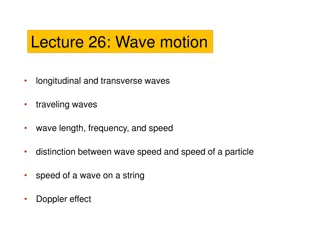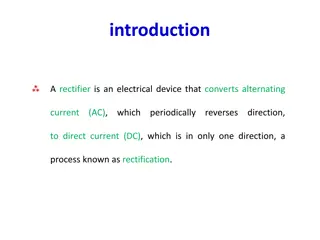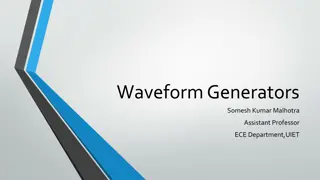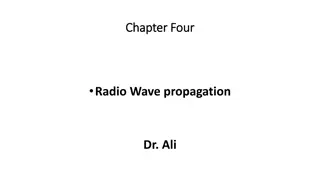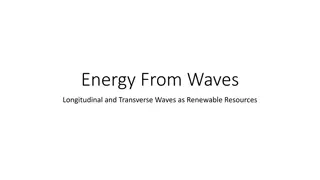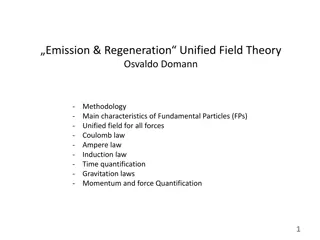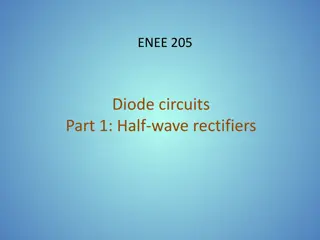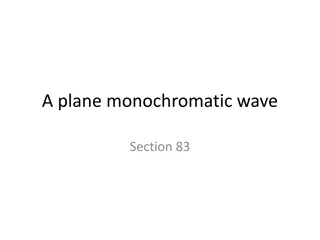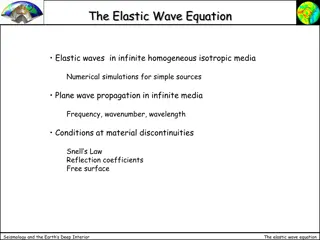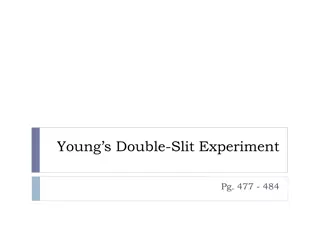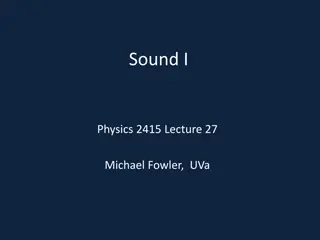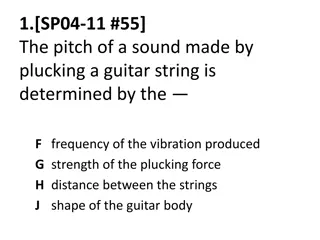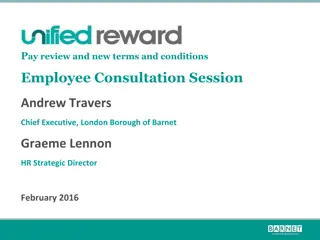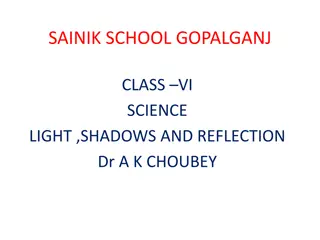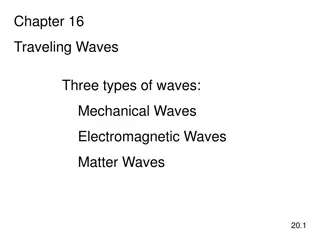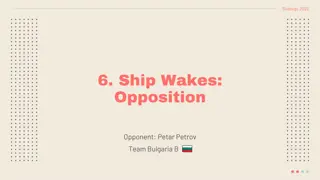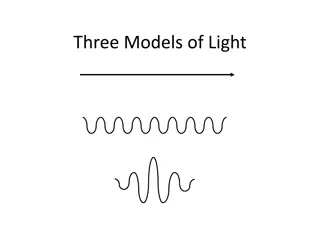Unified IF Interface for Integrated mm- and Light-wave
This contribution proposes a unified IF interface for integrated mm-wave and light-wave technology, aimed at optimizing communication systems using bands above 7 GHz. The proposal includes reusing existing sub-7 GHz basebands, introducing non-overlapping channels for mm-wave, and integrating optical bands. Various recent contributions and advancements in the field are considered, highlighting the potential for enhancing data transmission efficiency and management. The proposed approach involves a comprehensive strategy to merge mm-wave and optical bands seamlessly, offering new possibilities for control, management, and data transmission.
Download Presentation

Please find below an Image/Link to download the presentation.
The content on the website is provided AS IS for your information and personal use only. It may not be sold, licensed, or shared on other websites without obtaining consent from the author.If you encounter any issues during the download, it is possible that the publisher has removed the file from their server.
You are allowed to download the files provided on this website for personal or commercial use, subject to the condition that they are used lawfully. All files are the property of their respective owners.
The content on the website is provided AS IS for your information and personal use only. It may not be sold, licensed, or shared on other websites without obtaining consent from the author.
E N D
Presentation Transcript
March 2024 doc.: IEEE 802.11-24/0406r1 Unified IF interface for integrated mm- and light-wave Date: 2024-03-10 Authors: Name Affiliations email Volker Jungnickel Fraunhofer HHI volker.jungnickel@hhi.fraunhofer.de Wilhelm Keusgen Technische Universit t Berlin wilhelm.keusgen@tu-berlin.de Submission Slide 1 Volker Jungnickel, Fraunhofer HHI
March 2024 doc.: IEEE 802.11-24/0406r1 Abstract This contribution proposes a unified IF interface for integrated mm- and light-wave. Submission Slide 2 Volker Jungnickel, Fraunhofer HHI
March 2024 doc.: IEEE 802.11-24/0406r1 Previous work and this contribution Recent contributions showed significant interest in use of bands above 7 GHz [1-4] proposed to reuse existing Sub-7 GHz baseband [2] proposed non-overlapping channels for mm-wave [5, 6] proposed to limit the scope in general [7] proposed to reuse sub-7 GHz bands for control and mgmt. [8] proposed an initial PAR Besides, it is proposed to also include optical bands [9, 10] provided background on recent 11bb standard [11] proposed that optical bands are equally integrated into MLO [12] argued that optical bands can use similar non-overlapping channels like mm-wave [13] indicated that optical bands can be operated using both, the sub-7 GHz or an up-clocked sub-7 GHz numerology [14] proposed optical bands can use 11bb for control/mgmt. and new light-wave channels for data (non-standalone) This contribution proposes a unified IF interface for mm- and light-wave Source: 11-23/2016r2 [12] Submission Slide 3 Volker Jungnickel, Fraunhofer HHI
March 2024 doc.: IEEE 802.11-24/0406r1 Typical frontend interfaces (exemplary) p_control Digital IQ large # of digital ports Analog IQ two analog ports for I and Q digital SPI port, proprietary commands e.g., for power and frequency control Analog IF/RF single TX port further simplified DAC(I) PHY TX DSP VGA DAC(Q) 0 -90 f_control Synthe- sizer ref. clock Digital IQ Analog IQ Analog IF/RF Submission Slide 4 Volker Jungnickel, Fraunhofer HHI
March 2024 doc.: IEEE 802.11-24/0406r1 IF to mm-wave antenna connector, mm-wave IF signal 0 mm- wave IQ mod. ~ mm-wave local oscillator IF signal 90 mm-wave signal Direct Conversion Single-sideband (SSB) up-conversion to mm-wave is possible well known: 0 and 90 image signals cancel each other the IQ modulator has impairments, due to IQ imbalance SSB avoids in-band interference but creates out-of-band interference (typ. 20-30 dB below main signal) interferes with an AP in another room or at STA at another location (scenario-dependent) Submission Slide 5 Volker Jungnickel, Fraunhofer HHI
March 2024 doc.: IEEE 802.11-24/0406r1 IF to light-wave antenna connector, light-wave IF signal Direct Conversion Direct modulation of IF signal onto the light source, same as in 11bb other impairment effects, e.g. due to clipping at zero optical power clipping noise can be controlled via DC bias and percentage of the light being modulated well-known trade-off between performance and range Submission Slide 6 Volker Jungnickel, Fraunhofer HHI
March 2024 doc.: IEEE 802.11-24/0406r1 IF can be transported over fixed media Sub-7 GHz is NLOS technology due to multipath, AP covers every corner of the home just attenuated by walls and other objects coarse planning of AP location in the home is enough mm- and light-wave are LOS technologies will be blocked by walls and other objects allow smaller cells w/o interference (1 room = 1 cell) AP Submission Slide 7 Volker Jungnickel, Fraunhofer HHI
March 2024 doc.: IEEE 802.11-24/0406r1 IF signal can be transported over fixed media Sub-7 GHz is NLOS technology due to multipath, AP covers every corner of the home just attenuated by walls and other objects coarse planning of AP location in the home is enough mm- and light-wave are LOS technologies will be blocked by walls and other objects allow smaller cells w/o interference (1 room = 1 cell) Frontends are ideally placed at the ceiling planning of antenna / optical frontend locations is critical Fixed backbone to all distributed frontends deployment is similar to the lighting infrastructure analog IF signals can be transported over various fixed media AP Submission Slide 8 Volker Jungnickel, Fraunhofer HHI
March 2024 doc.: IEEE 802.11-24/0406r1 Summary Previous contributions indicated that mm- and light-wave can use similar channelization mm-wave needs up-clocked baseband, which light-wave can use as well, besides the original sub-7 GHz baseband mm- and light-wave frontends can both be connected to the AP via a unified IF interface using same channelization and a configurable baseband numerology analog IF signals can be more easily transported over fixed media We can handle both, mm- and light-wave signals in the same way same channelization, same baseband, same IF interface Submission Slide 9 Volker Jungnickel, Fraunhofer HHI
March 2024 doc.: IEEE 802.11-24/0406r1 References Integrated mmWave Design Considerations, doc. 11-23/1819r1 https://mentor.ieee.org/802.11/dcn/23/11-23-1819-01-immw-integrated-mmwave-design-considerations.pptx [1] High-Level Design Considerations of IMMW, 11-23/1878r1, https://mentor.ieee.org/802.11/dcn/23/11-23-1878-01-immw-high-level-design-considerations-of-immw.pptx [2] [3] Requirements Analysis for IMMW Use Cases, 11-23/1977r1, https://mentor.ieee.org/802.11/dcn/23/11-23-1977-01-immw-requirements-analysis-for-immw-use-cases.pptx [4] Discussion on Enabling MIMO in IMMW, 11-23/1991r, https://mentor.ieee.org/802.11/dcn/23/11-23-1991-00-immw-discussion-on-enabling-mimo-in-immw.pptx [5] Technical scope proposal, 11-23/2004r0, https://mentor.ieee.org/802.11/dcn/23/11-23-2004-00-immw-technical-scope-proposal.pptx [6] High-level thoughts on IMMW, 11-23/1905r0, https://mentor.ieee.org/802.11/dcn/23/11-23-1905-00-immw-high-level-thoughts-on-immw.pptx [7] mmWave operation without mmWave Beacon, 11-23/2152r0, https://mentor.ieee.org/802.11/dcn/23/11-23-2052-00-immw-mmwave-operation-without-mmwave-beacon.pptx [8] IMMW proposed PAR, 11-24/0116r1, https://mentor.ieee.org/802.11/dcn/24/11-24-0116-01-immw-immw-draft-proposed-par.docx [9] IEEE Std 802.11bb-2023, https://standards.ieee.org/ieee/802.11bb/10823/ [10] IEEE 802 Tutorial IEEE 802 Standards on Light Communication https://mentor.ieee.org/802.11/dcn/23/11-23-0277-01-0000-ieee-802-standards-on-light-communication.pdf [11] Extend IMMW scope to include optical bands, 11-23/2016r2, https://mentor.ieee.org/802.11/dcn/23/11-23-2016-02-immw-extend-immw-scope-to-include-optical-bands.pptx [12] Channelization to include optical bands, 11-24/0062r0, https://mentor.ieee.org/802.11/dcn/24/11-24-0062-00-immw-channelization-to-include-optical-bands.pptx [13] Numerologies to include optical bands, 11-24/0077r0, https://mentor.ieee.org/802.11/dcn/24/11-24-0077-00-immw-numerology-to-include-optical-bands.pptx [14] Thoughts on IMMW extension to optical bands, 11-24/0081r0, https://mentor.ieee.org/802.11/dcn/24/11-24-0081-00-immw-thoughts-on-immw-extensions-to-optical-bands.pptx Submission Slide 10 Volker Jungnickel, Fraunhofer HHI
